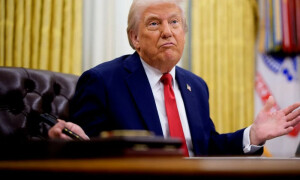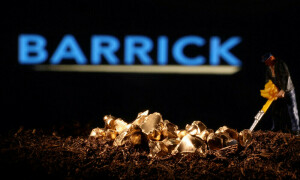Chinese output, retail and investment growth have all fallen to multi-year lows, official data showed Wednesday, the latest anaemic indicators to raise expectations of more government support for the world's second-largest economy. Industrial production, which measures output at China's factories, workshops and mines, rose 6.8 percent year-on-year in January and February, the National Bureau of Statistics (NBS) said.
That was the lowest for six years, since a reading of 5.7 percent in December 2008, and fell short of a median forecast for growth of 7.7 percent in a survey of economists by Bloomberg News. Retail sales, a key indicator of consumer spending, gained 10.7 percent during the first two months from the year before, the NBS said, the worst performance since 9.4 percent in February 2006.
And fixed asset investment, a measure of government spending on infrastructure, expanded 13.9 percent during the period, the NBS added - the lowest for 13 years, since 13.7 percent for the whole of 2001. The data are the latest snapshot of strains in the Asian colossus, a major driver of the global economy which is in a delicate transition phase away from decades of double-digit annual growth to a new, slower model that authorities say is more sustainable.
"Overall, core activity data confirm weakening growth momentum," Nomura economists wrote in an analysis of the data, attributing it to the ailing property sector and overcapacity in manufacturing. "To offset the headwinds to economic growth, we now expect monetary policy to be loosened even further." The NBS released statistics covering two months to ease out distortions due to China's Lunar New year holiday last month.
China's gross domestic product (GDP) expanded 7.4 percent last year, the worst result since 1990, and last week leaders lowered the country's 2015 GDP growth target to "approximately seven percent," from last year's objective of about 7.5 percent. Data so far this year have indicated a further slowing and the People's Bank of China cut benchmark deposit and lending interest rates in late February for the second time in three months, citing "historically low inflation". In a separate statement elaborating on the data, NBS expert Guo Tongxin said China was buffeted by divergent forces.
"Traditional economic drivers are clearly losing momentum while new drivers continue to emerge," Guo said. The Shanghai Composite Index, China's benchmark share market, closed up 0.15 percent to 3,290.90. ANZ economists Liu Li-Gang and Zhou Hao wrote in a reaction that monetary policy loosening has had limited effect so far.
They expected authorities to accelerate infrastructure investment after China's rubber-stamp legislature concludes its annual session on Sunday, adding: "Further easing effort or even targeted 'fiscal stimulus' is needed in order to arrest the downside risk." The National Development and Reform Commission, China's top economic planning agency, last week cut the target for fixed-asset investment growth to 15.0 percent in 2015 from last year's 17.5 percent, in line with authorities' aim of restructuring the economy to be more focused on consumer spending.
Consumer inflation rebounded to 1.4 percent in February from a more-than-five-year low, official data showed Tuesday, but a further 4.8 percent plunge in factory gate costs, a leading indicator for retail prices, compounded nagging worries that China could soon face debilitating deflation. The January and February data released Wednesday also contrasted with some recent positive signs, such as improved manufacturing surveys and strong export data.
"A sharp slowdown in Q1 of last year will have provided a flattering base for comparison," said Julian Evans-Pritchard, China economist at Capital Economics, calling the figures' weakness "surprising". "The upshot is that economic momentum appears markedly weaker than suggested."
BR100
12,239
Decreased By
-154.2 (-1.24%)
BR30
36,393
Decreased By
-714.3 (-1.92%)
KSE100
114,153
Decreased By
-1379.3 (-1.19%)
KSE30
35,200
Decreased By
-461.3 (-1.29%)





















Comments
Comments are closed.